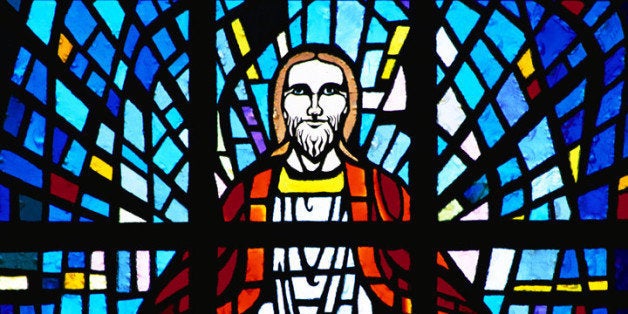
Until mid-June, you'll be able to see some of the greatest sculpture in the world on exhibit here in the U.S. The work is on loan from Florence Cathedral, now on view at the Museum of Biblical Art in New York City. The New York Times has called the exhibit as a "curatorial coup." It offers a once-in-a-lifetime opportunity to see some of the greatest works of art from the birthplace of the Renaissance.
While it's a rare and wonderful opportunity for anyone with an interest in Western art, it's also a way of getting a clearer vision of one's faith. In particular, three of Donatello's sculptures convey the radical nature of faith -- and to see this conveyed by an artist during an historical period when religion was a governing influence on civilized life is stunning.
I will leave it to the historians, scholars and art critics to describe the mastery of Donatello's work. Most people are more familiar with Michelangelo's sculpture, a century later, which is a model of perfection and power. Yet what is so remarkable in Donatello is how vulnerable, off-balance, and uncertain his subjects appear. The two most magnificent sculptures -- The Sacrifice of Isaac, and The Prophet -- quietly convey a sense of deep questioning, which gets deeper the longer you study them. The humanity of his figures is incredibly moving. These are people who, in the Bible are described as larger-than-life, which they are, physically, in this sculpture--they tower over visitors to the museum in a way that inspires awe. Yet the more you examine what Donatello has carved from marble, the more humble these people seem. They reveal themselves as human beings struggling to make their faith and their lives converge. In other words, you begin to identify with the burden of their lives and how much their faith demands of them.
This is interesting because the uncertainty and suspense in this work feels very contemporary. This was a time when the Catholic Church had been providing order in Europe since the fall of the Roman Empire and was now a powerful, governing institution. It provided order and meaning to the lives of ordinary people. Yet Donatello imagines key figures in his religion, a prophet, an evangelist and the historical father of three major religions -- Judaism, Christianity and Islam -- as men facing the future with harrowing uncertainty and a sense of individual isolation. In Donatello's sculpture, Abraham has been obediently preparing to kill his own son, at God's command. Donatello portrays him at the moment angels have told him to spare his son and let go of the knife.
His expression conveys astonishment, bewilderment, helplessness and overwhelming relief -- a man who has been pushed beyond his comforts and habits and assumptions to see and hear God in a fresh way. His world has gradually fallen apart and then suddenly come back together, as a result of his faith. His relationship with God has cut him off from everyone and everything. It's a vision of Christianity as something that demands everything of a person, and Abraham appears helpless, a man who has completely surrendered to God. In a historical period when Christianity was simply the standard vision of the world and the meaning of human life, Donatello's vision reminds you of how radical and unsettling it actually was for those who founded the religion. His Prophet takes this vision even further -- a rough-hewn figure in a spare robe, bald, possibly blind, a man who has seen the truth of life while also cutting himself off from what drives most of us to do what we do: money, family, fame, power.
To see these magnificent sculptures is a rare opportunity to reacquaint yourself with the central challenge of Christianity, or any other faith -- to live with compassion through obedience to God. It's also a bracing way to remind yourself how faith once represented a challenge to those who took it seriously, how the act of following God was something unsettling, disorienting and demanding. It still is. Faith never has been a matter of simply going to a place of worship once per week, and yet it's so easy to let it lapse into something taken for granted. It can become something you think has been taken care of in your life, like a college degree, and you assume you are living by it. In reality, faith is always asking you to question how much more you can be doing every day to serve God by serving other people. Donatello conveys, in extreme ways, how unsettling and demanding that faith once was -- and how maybe it should be again.
Peter Georgescu is the author of The Constant Choice. He can be found at Good Reads.
